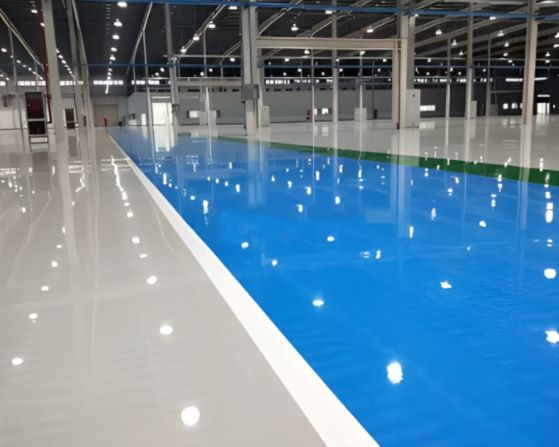This article was last revised in 197 Days ago, some of its contents may have changed. If you have any questions, you can ask the author。
With the advancement of environmental protection policies and the improvement of consumer health awareness, water-based floor paint has gradually become the first choice in the home and industrial fields. The following are its five core advantages compared to traditional oil-based floor paint, combined with market trends and user needs, for you to analyze in depth:
1. Outstanding environmental performance, health and safety without hidden dangers
Water-based floor paint uses water as a dispersion medium, and almost does not contain harmful volatile organic compounds (VOCs) such as formaldehyde and toluene. There is no irritating odor during the construction process, which is more friendly to the health of construction workers and residents. Oil-based paint contains a large amount of organic solvents, which not only pollutes the environment, but long-term contact may also cause respiratory diseases. In addition, water-based floor paint complies with global environmental protection regulations, such as the EU VOC emission restrictions, and is the mainstream direction of the future coatings industry.
2. Better air permeability and moisture resistance, solving the "bubbling" problem
The water-based paint film has a microporous structure, which allows underground water to evaporate naturally, avoiding bubbling and shedding caused by water vapor accumulation. In contrast, the oil-based paint film is too dense, and it is easy to have hollowing defects due to the inability to release water vapor inside the concrete. This feature is particularly suitable for humid environments or newly poured concrete bases, and has stronger construction adaptability.
3. Excellent weather resistance and durability
Water-based floor paint performs well in outdoor environments, has outstanding UV resistance, and is not easy to yellow or powder after long-term exposure. Its wear resistance and pressure resistance can withstand mechanical shock and vehicle rolling, and is suitable for high-intensity scenes such as industrial plants and garages. Oil-based paint is easy to age outdoors, and the maintenance cost is higher.
4. Convenient construction and lower cost
Water-based paint supports open construction (no professional explosion-proof equipment is required), and unused paint can be sealed and stored and reused to reduce waste. Once opened, oil-based paint is easy to solidify and scrap, and construction requires professional operation, and the overall cost is higher. In addition, water-based paint dries quickly (can be used in 2 hours), which greatly shortens the construction period.
5. Driven by both policies and markets, the future prospects are broad
The global water-based coatings market is expected to reach US$96.14 billion by 2032, with a compound annual growth rate of 2.83%.
